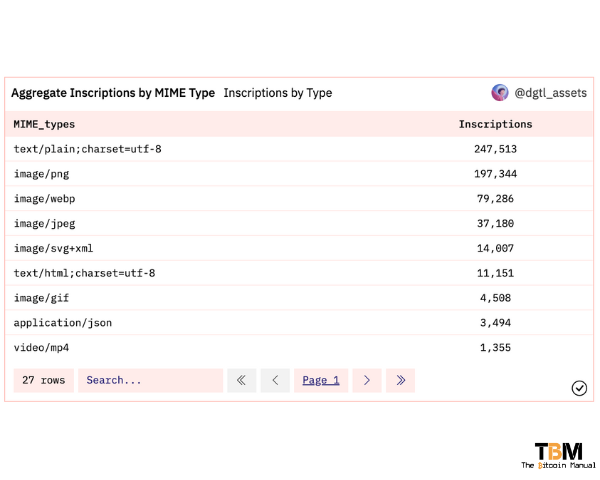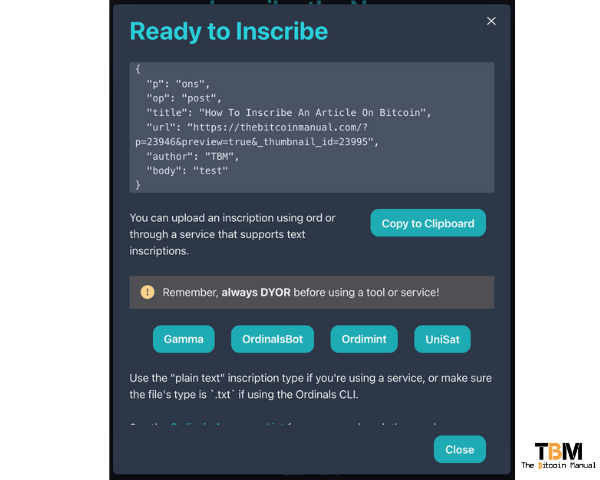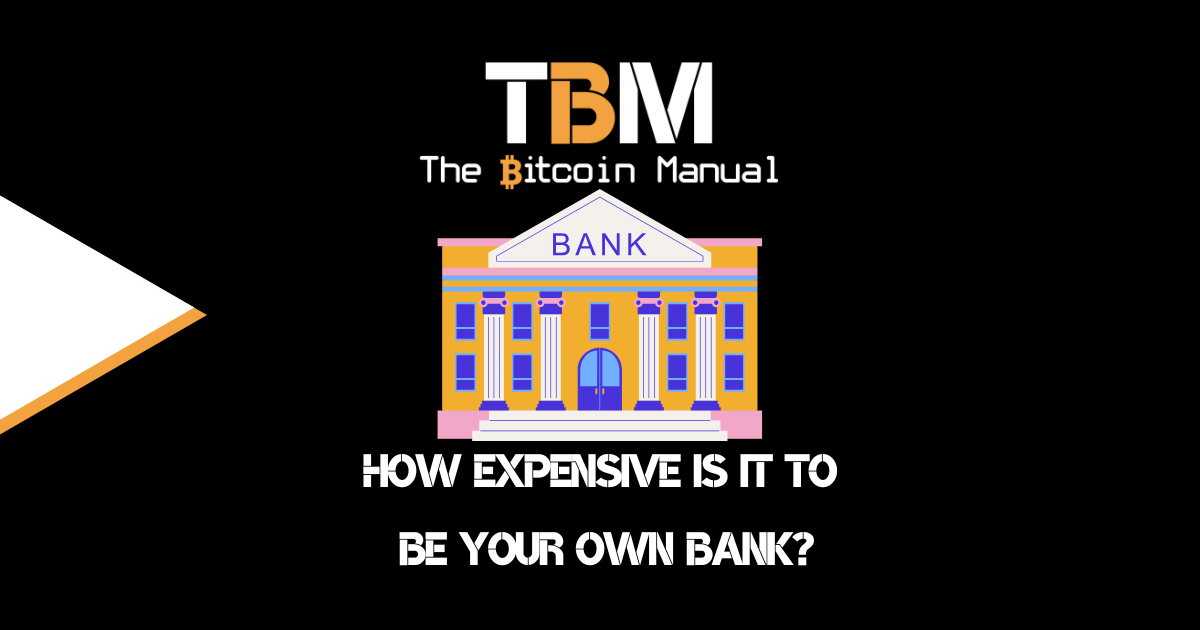The emergence of bitcoin ordinals has ignited a fresh debate about the purpose of bitcoin and the resources used to manage this decentralised payment network. Monetary purists feel that bitcoin should only be used for transactions; bitcoin libertarians side with the fact that if you can pay for it and it doesn’t break consensus, you can do what you want with your money.
Ordinals and inscriptions are marketed as a method of creating “digital artefacts” on the bitcoin blockchain, and that’s all it is marketing. Projects in the space have the incentive to mint easy-to-produce images, plonk them onto the blockchain and encourage others to buy them for more than the user paid to secure that inscribed transaction.
A classic bait-and-switch scam, this time with a bit of orange washing for good measure to help lend some credibility to projects, “building on bitcoin”.
If you’re buying or minting inscriptions for the fun of it, go wild, spend your money as you see fit, but if you’re trying to resell these so-called “claims” to other people, in my book, this ventures into the scamming territory.
Although speculative NFT trading is the most popular use case, including collectables, digital art, video games, virtual real estate, concert tickets, ordinals and inscriptions aren’t a standardised token protocol, it’s being used to mimic it in a crude manner utilising the bitcoin blockchain.
Since the protocol’s launch in February 2023, we’ve seen all types of files inscribed to the bitcoin blockchain, from JPEG, HTML, SVG, JS, CSS, images, audio, and even video.
If we look at the number of inscriptions added to the bitcoin blockchain, the vast majority are text-based, which makes sense, since they take up less space, these inscriptions don’t compete with block space too much and are far cheaper to push through.

Adding text to the bitcoin blockchain is not unheard of; even before the inscriptions update, we’ve seen bitcoiners add the birth date of their child or wedding dates and much more.
Even back at the start of bitcoin, in the genesis block, Satoshi Nakamoto himself left an annotation as a hidden message in the coinbase parameter hexadecimal.
Satoshi Nakamoto – Genesis block
“The Times 03/Jan/2009 Chancellor on brink of second bailout for banks”
Vanity should come at a cost.
While I think ordinals are a vanity application, It doesn’t mean the vanity can’t be applied in a way that offers value to a certain subset of users.
Suppose you have a document you want to get out into the public sphere, and you have no other method of broadcasting it; an inscription can be an option. If someone is willing to sacrifice some bitcoin to ensure a document or data reaches the public, it must be worth sharing in a method that is censorship resistant.
I would never recommend a user opt to spend bitcoin to broadcast a message, there are other ways and means of sharing information, and nostr comes to mind, but with the size and user base of nostr right now, your message might not reach critical mass the way it would, should it be embedded into the worlds most powerful computing network, monitored by thousands around the world.
Text inscriptions could also be used to showcase annotations of bitcoin’s history. Suppose a country wants to follow in El Salvador’s footsteps and make bitcoin legal tender; they could make the statement by inscribing the text file of the bill directly into the bitcoin blockchain.
Since the file cannot be removed or rolled back, you are making a statement, and should you not follow through, that inscription will remain a global reminder of your failure.
Creating text-based inscriptions.
If you wanted to add a PR release, article or statement to the bitcoin blockchain that would be understood by ordinal readers looking to display text, you could use the following format. Fill in the sections below and save it as a txt file and then follow the inscription process using your full node.
You can install the ordinals software on your node and follow the prompts, and instead of uploading a file like a jpeg, upload the txt file instead.
{
"p": "ons",
"op": "post",
"title": "Post Title",
"url": "website url if availble",
"author": "name of the author",
"body": "Body text of the article"
}Alternatively, you could use an inscription service that will do all the formatting for you and help you inscribe it to the blockchain by paying and trusting a third-party service to broadcast the transaction to the bitcoin blockchain for you.
Inscribing text with a custodian.
- Head over to inscribe.news.
- Fill in the values as requested by the service.

- Use the “plain text” inscription type if you’re using a service
- Alternatively, use the file’s type `.txt` if using the Ordinals CLI.

If you’re not running ordinals yourself and planning to broadcast it to the chain via your own node, there are third-party tools to help you out.
Select one of the ordinal minting services available.
Note: You are trusting these tools to honour your request and that they will execute it properly, so be warned that you might spend bitcoin that ends up not giving you what you wanted. This does go against the ethos of bitcoin by adding trust when you should be verifying through direct communication with the chain via your node.
But what the heck, right? If you’re already using ordinals and inscriptions, you’re probably not too concerned about bitcoin ethos, and you’re willing to take a chance getting rugged.
Text inscription readers.
There are services like Inscribe News that scrape the bitcoin blockchain looking for text files with the format provided above and then extract that information to a local database to have it displayed on their site.
This doesn’t make the site censorship-resistant; they only display a copy of the file pulled from the bitcoin blockchain. The site owner can choose to hide your content or risk having their domain taken down should the content affect or offend certain parties. The censorship resistance only comes in the fact that anyone who chooses to run a bitcoin full node could secure a copy of that file.

Inscription text readers will also pull down specific metadata along with the article and display it on the site, such as:
- Inscription ID
- Inscription hash
- bitcoin address
- Content type
- Content length
- Block height
- Transaction ID
- Time-stamp

This data can be used to verify the legitimacy of an inscription; if a particular entity were to sign using those keys, they could prove that they indeed released that content. A helpful tool in the case of a government or company releasing a statement and wishing to authenticate the message.
But it also means that you must be careful about the bitcoin wallet you’re using and how you plan to manage the address since it is now publicly tied to content. If the content is controversial, you better ensure you have no public ties to that address or have a transaction history with that address that can be tied to any KYC data.
Do your own research.
If you want to learn more about Ordisrespector, NFTs or Ordinals on bitcoin, use this article as a jumping-off point and don’t trust what we say as the final say. Take the time to research other sources, and you can start by checking out the resources below.
Which side of the ordinals debate are you on?
Do you like the idea of bringing NFTs to the bitcoin base chain, or do you think it is a distraction? Does it bring additional utility or a new set of narrative attack vectors for bitcoin? How do you think the incentive structure around transactions will change with this new form of transaction competing for on-chain block space?
Let us know in the comments below.




